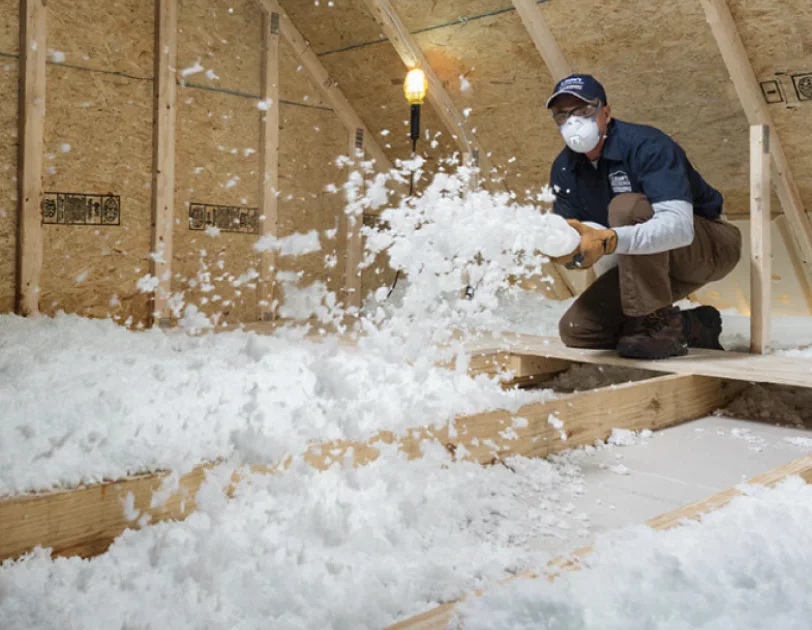A Quick Guide to Home Insulation
February 7th, 2024 | by Madison Stone

Pete & Co. – A Quick Guide to Home Insulation
Choosing the right insulation for your home can mean the difference between dealing with a drafty money pit of a house or living in a comfortable, energy-efficient space, but few homeowners are fully aware of their options when it comes to insulation.
Or, at least, few know the real differences between batts, foams, boards, fiberglass, etc.—and why would they? Once a builder or contractor starts using terms like ‘polyurethane,’ ‘cellulose,’ and ‘polyisocyanurate,’ it’s easy to lose track of what’s what and what the best options are. (But seriously, does anyone really know what polyisocyanurate is?)
That’s why we wanted to give a quick run-down of the most common types of insulation, their basic differences, uses, materials, and levels of energy efficiency, and what we recommend for your home.
Q: What are the most common types of insulation?
A:


Blanket: Batts or Rolls
– Insulation batts and rolls are very similar in cost, form, and efficiency. They’re perhaps the most common types of insulation given how easy and inexpensive they are to install. Both are laid snug between unfinished wall and ceiling framing—hence the term ‘blanket insulation’—and both are made of flexible fibers, typically fiberglass.
– The main difference between the two is that batts come in precut sheets that fit piece-by-piece into place while rolled insulation comes in large rolls that fill an area seamlessly.
.
Foam Board

Foam board insulation – Foam boards, like batts, are sheets of insulation cut into sections and pieced together. However, they’re more rigid than batts and can be used nearly anywhere in a home, including exteriors. One of the advantages of foam board is that it has a high R-value (see below) and water resistance for not a lot of hassle.
.
Blow-In
Blow-in insulation – Blow-in, or loose-fill, insulation is exactly what it sounds like: insulation blown into place. This type of insulation is perfect for insulating enclosed or hard-to-reach areas, or places where blankets or boards just don’t work. However, the material, usually made of fiberglass or cellulose, must be sprayed with special equipment, making it harder to install and a bit more expensive.
.
Spray Foam
– Like blow-in insulation, spray foam can be used nearly anywhere, whether it be finished spaces, unfinished spaces, attics, walls, or any crack and crevice in need of insulation. But, while the application is similar, spray foam is made of vastly different materials—namely, polyurethane and isocynate, which combined creates a foam that expands and hardens upon application. The foam must be handled carefully and with the right equipment, as its chemicals cause irritation to the skin and lungs—it’s recommended, understandably, that installing this type of insulation be left to the pros. (Small projects are easy enough to DIY, but spraying a whole house or room can become tricky.)
Spray foam insulation – There are two types of spray foam insulation: open-cell and closed-cell. Open-cell has a lower R-value than closed-cell, making it cheaper than the latter, but any spray foam will still be more effective and expensive than most non-foam insulation.
.
Q: What are the common materials in insulation?
A: Here are the short and sweet definitions:
Fiberglass – extremely fine molten glass spun into fibers.
Cellulose – small pieces of recycled paper products that are fiberized, compacted, and treated with fire and insect retardants.
Polyurethane Foams – a thermoset foam containing low-conductivity gas in its cells; the more gas in the cells, the better the R-value (closed-cell vs. open-cell).
Other common insulating materials include mineral wool (which is formed by melting, fiberizing, and curing natural materials such as mineral or rock) and natural fibers (such as treated wool, cotton, or straw).
.
Q: What is an insulation’s R-value?
A: Simply put, an insulation’s R-value tells how well it keeps heat from entering or leaving a space based on its thickness and density. The higher the R-value, the higher the thermal resistance, the better the climate control.
The preferred R-value of an insulation is usually determined by the climate it’s being used in. For instance, when looking at the chart below, zone 6 has a much colder climate than zone 2, so the floors and crawlspaces require a much higher R-value.

Most of Oklahoma sits in zone 3, so our recommended R-values are as follows:
Attics: R30 – R60

2×4 walls: R13 – R15
2×6 walls: R19 – R21
Floors: R25
Crawlspaces: R19 – R25
.
Q: What’s the most energy-efficient insulation?
A: Energy efficiency of the common types of insulation (based solely on their approximate R-value):
Batts: R2.9 – R3.8 per inch
Rolls: R2.9 – R3.8 per inch
Foam Board: R4 – R6.8
Blow-In: R2.2 – R4
Spray Foam (open-cell): R3.7
Spray Foam (closed-cell): R6.2
.
Q: What types of insulation does Stonewall Homes use/recommend?
A: At Stonewall Homes, our recommendation is to use blow-in fiberglass and open-cell foam based on the efficiency vs. price of each.
We use blow-in fiberglass in the walls of our homes to get the best coverage and insulation for the price. In the roof, which typically needs a bit more protection than other areas, we use open-cell foam—not as costly as closed-cell, but more effective than the fiberglass.
